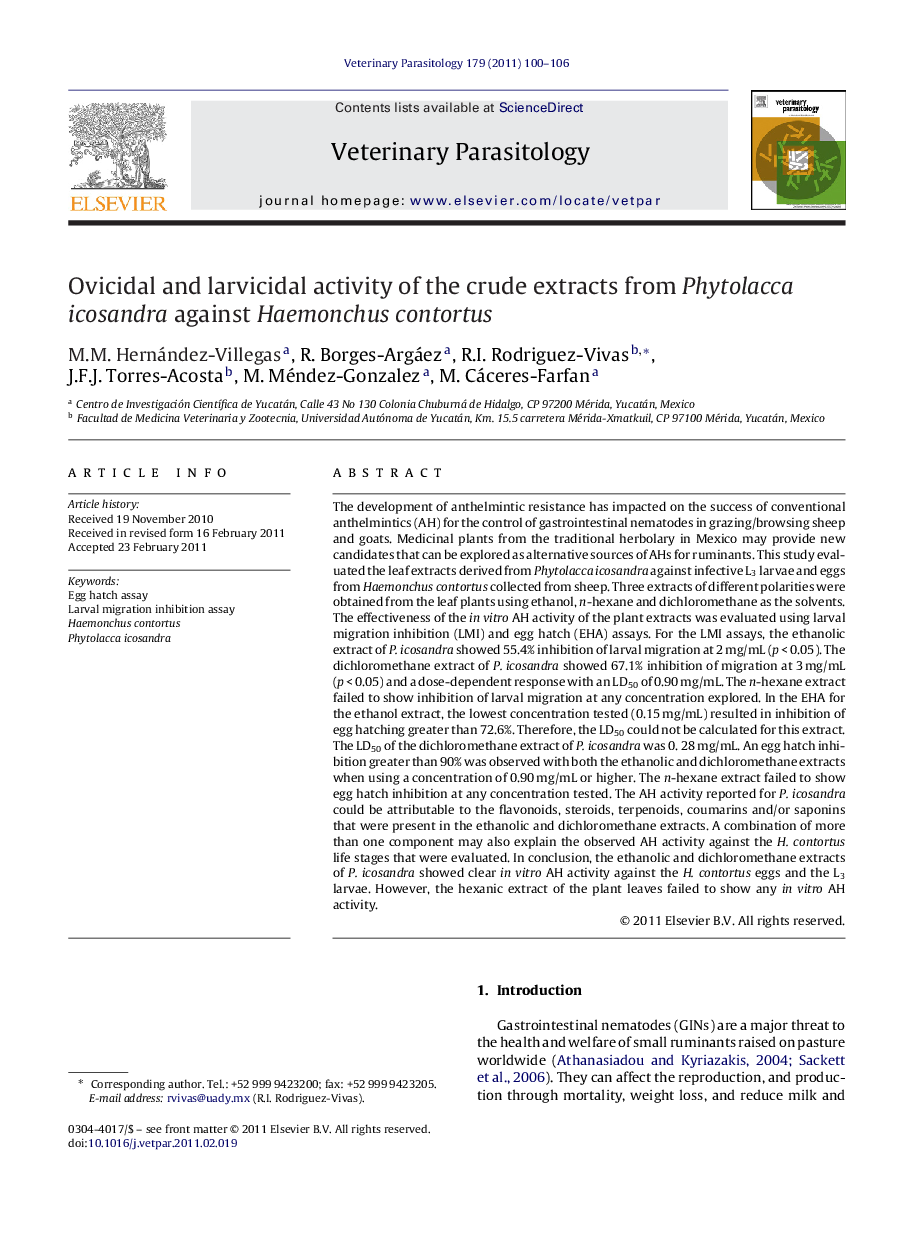| کد مقاله | کد نشریه | سال انتشار | مقاله انگلیسی | نسخه تمام متن |
|---|---|---|---|---|
| 2470257 | 1555724 | 2011 | 7 صفحه PDF | دانلود رایگان |

The development of anthelmintic resistance has impacted on the success of conventional anthelmintics (AH) for the control of gastrointestinal nematodes in grazing/browsing sheep and goats. Medicinal plants from the traditional herbolary in Mexico may provide new candidates that can be explored as alternative sources of AHs for ruminants. This study evaluated the leaf extracts derived from Phytolacca icosandra against infective L3 larvae and eggs from Haemonchus contortus collected from sheep. Three extracts of different polarities were obtained from the leaf plants using ethanol, n-hexane and dichloromethane as the solvents. The effectiveness of the in vitro AH activity of the plant extracts was evaluated using larval migration inhibition (LMI) and egg hatch (EHA) assays. For the LMI assays, the ethanolic extract of P. icosandra showed 55.4% inhibition of larval migration at 2 mg/mL (p < 0.05). The dichloromethane extract of P. icosandra showed 67.1% inhibition of migration at 3 mg/mL (p < 0.05) and a dose-dependent response with an LD50 of 0.90 mg/mL. The n-hexane extract failed to show inhibition of larval migration at any concentration explored. In the EHA for the ethanol extract, the lowest concentration tested (0.15 mg/mL) resulted in inhibition of egg hatching greater than 72.6%. Therefore, the LD50 could not be calculated for this extract. The LD50 of the dichloromethane extract of P. icosandra was 0. 28 mg/mL. An egg hatch inhibition greater than 90% was observed with both the ethanolic and dichloromethane extracts when using a concentration of 0.90 mg/mL or higher. The n-hexane extract failed to show egg hatch inhibition at any concentration tested. The AH activity reported for P. icosandra could be attributable to the flavonoids, steroids, terpenoids, coumarins and/or saponins that were present in the ethanolic and dichloromethane extracts. A combination of more than one component may also explain the observed AH activity against the H. contortus life stages that were evaluated. In conclusion, the ethanolic and dichloromethane extracts of P. icosandra showed clear in vitro AH activity against the H. contortus eggs and the L3 larvae. However, the hexanic extract of the plant leaves failed to show any in vitro AH activity.
Journal: Veterinary Parasitology - Volume 179, Issues 1–3, 30 June 2011, Pages 100–106